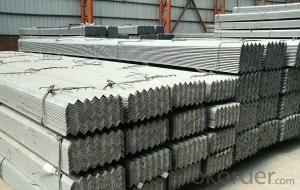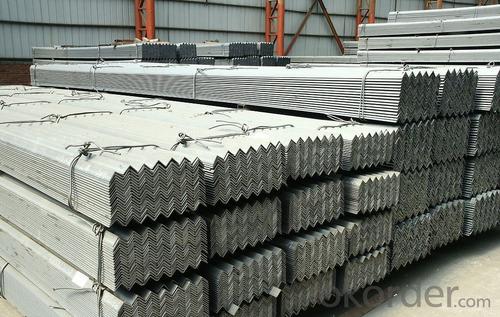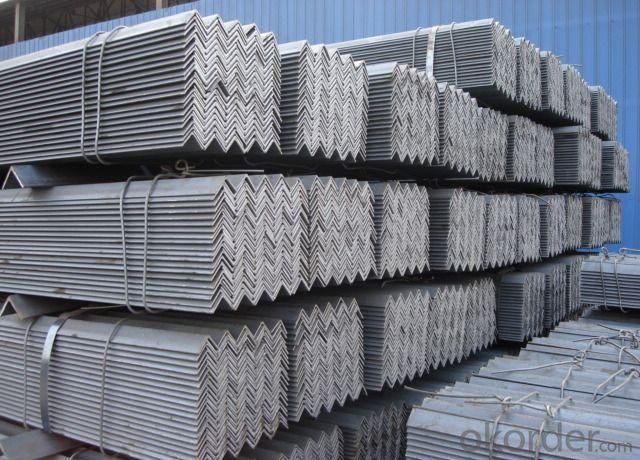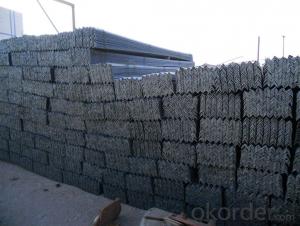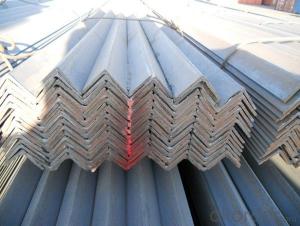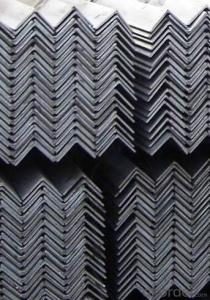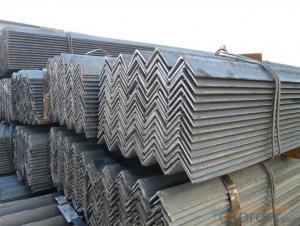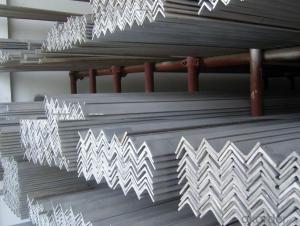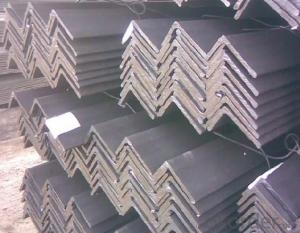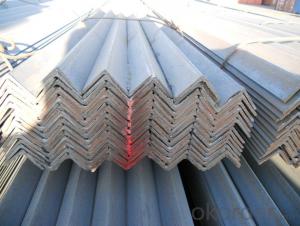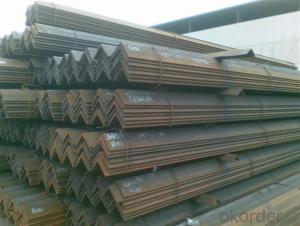GB Q345 Steel Angle with High Quality 100*100mm
- Loading Port:
- Tianjin
- Payment Terms:
- TT or LC
- Min Order Qty:
- 25 m.t
- Supply Capability:
- 10000 m.t/month
OKorder Service Pledge
OKorder Financial Service
You Might Also Like
Specifications of GB Q345 Steel Angle with High Quality 100*100mm:
1.Standards: GB
2.Material: Q345 or Equivalent
3.Length: 6m, 12m
4.Size:
| Size (mm) | Mass (kg/m) | Size (mm) | Mass (kg/m) |
| 100*100*6 | 9.366 | 100*100*10 | 15.120 |
| 100*100*7 | 10.830 | 100*100*12 | 17.898 |
| 100*100*8 | 12.276 |
Usage & Applications of GB Q345 Steel Angle with High Quality 100*100mm:
Trusses;
Transmission towers;
Telecommunication towers;
Bracing for general structures;
Stiffeners in structural use.
Packaging & Delivery of GB Q345 Steel Angle with High Quality 100*100mm:
1. Transportation: the goods are delivered by truck from mill to loading port, the maximum quantity can be loaded is around 40MTs by each truck. If the order quantity cannot reach the full truck loaded, the transportation cost per ton will be little higher than full load.
2. With bundles and load in 20 feet/40 feet container, or by bulk cargo, also we could do as customers' request.
3. Marks:
Color mark: There will be color marking on both end of the bundle for the cargo delivered by bulk vessel. That makes it easily to distinguish at the destination port.
Tag mark: There will be tag mark tied up on the bundles. The information usually including supplier logo and name, product name, made in China, shipping marks and other information request by the customer.
If loading by container the marking is not needed, but we will prepare it as customers' request.
FAQ:
Q1: Why buy Materials & Equipment from OKorder.com?
A1: All products offered byOKorder.com are carefully selected from China's most reliable manufacturing enterprises. Through its ISO certifications, OKorder.com adheres to the highest standards and a commitment to supply chain safety and customer satisfaction.
Q2: How do we guarantee the quality of our products?
A2: We have established an advanced quality management system which conducts strict quality tests at every step, from raw materials to the final product. At the same time, we provide extensive follow-up service assurances as required.
Q3: How soon can we receive the product after purchase?
A3: Within three days of placing an order, we will arrange production. The shipping date is dependent upon the quatity, how many sizes you want and the plan of production, but is typically 30 to 45 days from the beginning of production.
Images of GB Q345 Steel Angle with High Quality 100*100mm:
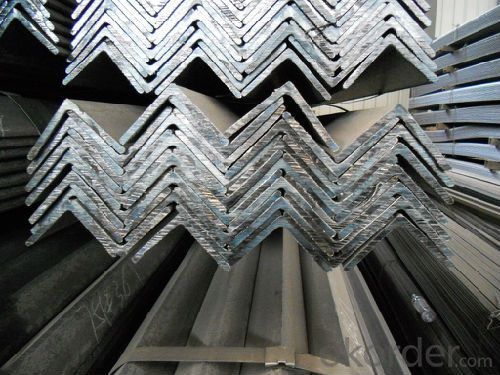
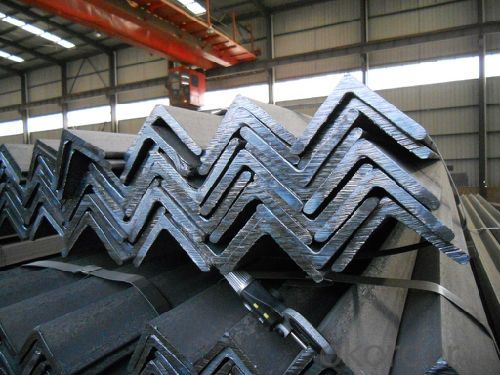
*If you would like to get our price, please inform us the size, standard/material and quantity. Thank you very much for your attention.
- Q: How do you cut steel angles?
- There are various techniques available for cutting steel angles, depending on their thickness and size. One popular approach involves using metal cutting saws like metal chop saws or band saws. These saws are specifically designed for cutting through metal and possess the necessary power and cutting capacity for steel angles. Prior to cutting, it is essential to securely fasten the steel angle in place using clamps or a vice to prevent any movement during the cutting process. This ensures precise and clean cuts. It is also advisable to wear appropriate safety equipment, including safety glasses and gloves, as cutting steel can generate sharp metal chips. If utilizing a metal chop saw, you can adjust the saw's angle to match the angle you wish to cut. Be sure to set the blade speed and feed rate according to the manufacturer's recommendations for steel cutting. Gradually lower the blade onto the steel angle, applying consistent pressure to achieve a smooth and accurate cut. When employing a band saw, make sure to install the suitable blade for cutting metal. Adjust the blade tension and guide settings as per the manufacturer's instructions. Slowly feed the steel angle into the saw, maintaining a steady pace to obtain a clean cut. It is important to note that band saws may generate more heat during cutting, so periodically applying a coolant lubricant can prevent overheating and prolong the blade's lifespan. For thicker and larger steel angles, plasma cutting or oxy-fuel cutting methods can be employed. These methods involve using high-temperature flames or a plasma arc to melt through the steel. However, operating these techniques safely requires specialized equipment and expertise. Irrespective of the cutting method used, it is crucial to accurately measure and mark the intended cut line before commencing the cutting process. This guarantees that the steel angle is cut to the correct dimensions. Additionally, it is recommended to practice on scrap pieces of steel before attempting to cut the actual steel angle. This helps familiarize oneself with the cutting process and ensures desired outcomes.
- Q: Are steel angles suitable for seismic design?
- Yes, steel angles are commonly used in seismic design. Steel angles offer several advantages that make them suitable for seismic design. Firstly, steel angles have a high strength-to-weight ratio, which means they can withstand high levels of seismic forces while being relatively lightweight. This is important in seismic design as it allows for the construction of structures that can absorb and dissipate seismic energy efficiently. Secondly, steel angles have excellent ductility, which is the ability to deform without breaking. During an earthquake, structures undergo significant deformations due to ground shaking. Steel angles can absorb these deformations by flexing and bending without compromising their structural integrity. This ductility helps in dissipating the seismic energy and prevents the sudden collapse of the structure. Additionally, steel angles can be easily connected and fabricated, allowing for efficient construction in seismic zones. They can be welded or bolted together to create rigid connections that can resist seismic forces. The versatility of steel angles allows for the design of various structural elements, such as braces, beams, and columns, that can effectively withstand seismic loads. Furthermore, steel angles are highly durable and resistant to corrosion, which is crucial in seismic design. Structures in seismic zones are often exposed to harsh environmental conditions, including moisture and corrosive agents. Steel angles can withstand these conditions and maintain their structural integrity over time. In conclusion, steel angles are suitable for seismic design due to their high strength-to-weight ratio, excellent ductility, ease of fabrication, and resistance to corrosion. These properties make steel angles a reliable choice for constructing structures that can withstand and safely absorb seismic forces.
- Q: Are steel angles suitable for window frames?
- Yes, steel angles are suitable for window frames. Steel angles are often used in construction for their strength and durability, making them an ideal choice for supporting the weight of window frames. They provide excellent structural support, ensuring that the window frames remain stable and secure. Additionally, steel angles are resistant to corrosion, which is particularly advantageous for window frames that are exposed to external elements such as rain and humidity. Furthermore, steel angles can be easily fabricated and customized to meet specific design requirements, making them a versatile option for window frame construction. Overall, steel angles offer numerous benefits that make them a suitable choice for window frames in terms of strength, durability, corrosion resistance, and flexibility.
- Q: What are the common grades of steel used for angles?
- The common grades of steel used for angles vary depending on the specific application and requirements. However, some of the most commonly used grades of steel for angles include A36, A572-50, and A588. A36 is a low carbon steel that is commonly used in construction and structural applications due to its strength and versatility. A572-50 is a high-strength, low-alloy steel that is often used in structural applications and has excellent weldability and formability. A588 is a high-strength, low-alloy steel that is primarily used in outdoor applications such as bridges and buildings, as it has excellent corrosion resistance. These grades of steel offer different characteristics and properties, allowing for various applications and ensuring the angles meet the specific project requirements.
- Q: What are the advantages of using steel angles in manufacturing?
- Using steel angles in manufacturing offers several advantages. Firstly, steel angles possess immense strength and durability, making them suitable for a wide array of applications. They are capable of withstanding heavy loads and providing structural stability, making them an ideal choice for the construction of buildings, bridges, and other infrastructure projects. Secondly, steel angles provide versatility in terms of design. They can be easily customized and fabricated into different shapes and sizes, allowing manufacturers to create products that meet specific requirements. Whether it be a simple bracket or a complex framework, steel angles can be adapted to fit any desired design. Furthermore, steel angles exhibit excellent resistance to corrosion. They can endure exposure to moisture, chemicals, and other environmental factors, making them suitable for outdoor applications and industries where corrosion poses a concern. Another advantage of utilizing steel angles is their cost-effectiveness. Steel is a relatively inexpensive material compared to alternatives such as aluminum or stainless steel. Moreover, steel angles have a long lifespan, requiring minimal maintenance and replacement, thus reducing overall costs in the long term. Lastly, steel angles are readily available in the market. They can be easily obtained from steel suppliers, ensuring accessibility for manufacturers worldwide. In conclusion, the utilization of steel angles in manufacturing grants advantages in terms of strength, versatility, corrosion resistance, cost-effectiveness, and availability. These factors make steel angles the preferred choice for various industries, enabling them to produce high-quality, durable, and cost-efficient products.
- Q: How are steel angles different from steel channels?
- Steel angles and steel channels are both types of structural steel shapes that are commonly used in construction and engineering projects. However, they differ in terms of their shape and structural properties. Steel angles have an L-shaped cross-section, with two legs that are perpendicular to each other. The legs of steel angles can have equal or unequal lengths, depending on the specific application. Steel angles are typically used to provide structural support in applications such as framing, bracing, and reinforcement. They are often used in construction projects to provide stability and strength to structures. On the other hand, steel channels have a U-shaped cross-section, with two parallel flanges connected by a web. The flanges are oriented in the same direction, while the web connects them. Steel channels are commonly used in applications that require load-bearing capabilities, such as building frameworks, support beams, and infrastructure projects. They are designed to distribute weight evenly and provide structural stability. In terms of their structural properties, steel angles are known for their high strength-to-weight ratio. This makes them suitable for applications where strength and durability are crucial. Steel angles can be easily welded, bolted, or riveted, making them versatile and easy to work with. Steel channels, on the other hand, offer excellent load-bearing capabilities due to their U-shaped design. The parallel flanges provide increased strength and stability, making them ideal for supporting heavy loads and resisting bending or twisting forces. Steel channels are also known for their resistance to warping and twisting, ensuring the structural integrity of the project. In summary, steel angles and steel channels differ in terms of their shape and structural properties. Steel angles have an L-shaped cross-section and are commonly used for framing and reinforcement, while steel channels have a U-shaped cross-section and are used for load-bearing applications. Understanding the differences between these two types of structural steel shapes is essential for selecting the appropriate one for a specific construction or engineering project.
- Q: What are the common uses for steel angles?
- Steel angles are commonly used in construction and engineering projects for various purposes such as providing structural support, bracing or reinforcing structures, framing walls and ceilings, creating edges or corners, and forming joints and connections between different components.
- Q: Can steel angles be used in the construction of hospitals?
- Yes, steel angles can be used in the construction of hospitals. Steel angles are versatile and commonly used in various construction projects, including hospitals. They provide structural support, reinforcement, and are often used for framing, bracing, and connecting different components of a building. Steel angles offer strength, durability, and fire resistance, making them suitable for hospital construction where safety and stability are crucial.
- Q: What is the standard size of steel angles?
- The standard size of steel angles can vary depending on the specific application and industry requirements. However, common standard sizes for steel angles typically range from 1/2 inch to 8 inches in width and height, with a thickness that can range from 1/8 inch to 1 inch.
- Q: What are the alternatives to steel angles in construction?
- Some alternatives to steel angles in construction include aluminum angles, fiberglass angles, and plastic angles. These materials offer different properties such as lightweight, corrosion resistance, and flexibility, making them suitable for various construction applications.
Send your message to us
GB Q345 Steel Angle with High Quality 100*100mm
- Loading Port:
- Tianjin
- Payment Terms:
- TT or LC
- Min Order Qty:
- 25 m.t
- Supply Capability:
- 10000 m.t/month
OKorder Service Pledge
OKorder Financial Service
Similar products
Hot products
Hot Searches
Related keywords
